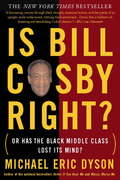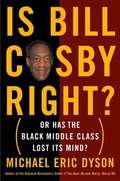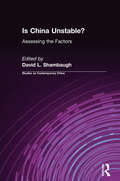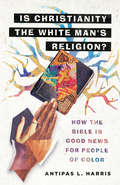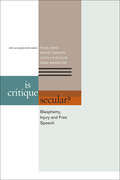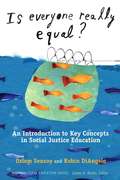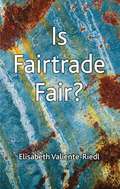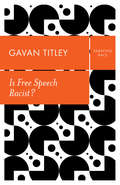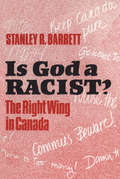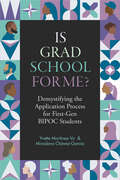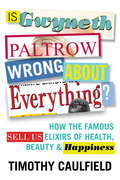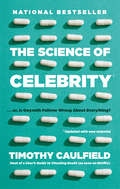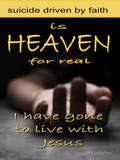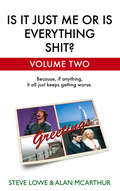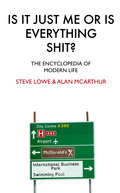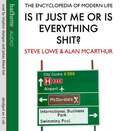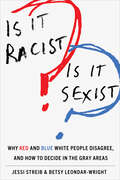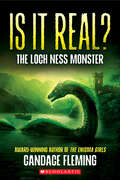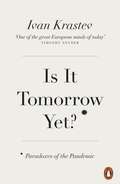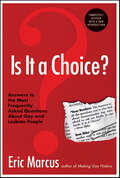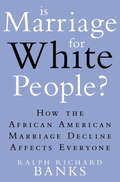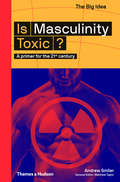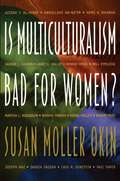- Table View
- List View
Is Bill Cosby Right?: Or Has the Black Middle Class Lost Its Mind?
by Michael Eric DysonMichael Eric Dyson took America by storm with this provocative expose of the class and generational divide that is tearing black America apart. Nothing exposed the class and generational divide in black America more starkly than Bill Cosby’s now-infamous assault on the black poor when he received an NAACP award in the spring of 2004. The comedian-cum-social critic lamented the lack of parenting, poor academic performance, sexual promiscuity, and criminal behavior among what he called the "knuckleheads” of the African-American community. Even more surprising than his comments, however, was the fact that his audience laughed and applauded. Best-selling writer, preacher, and scholar Michael Eric Dyson uses the Cosby brouhaha as a window on a growing cultural divide within the African-American community. According to Dyson, the "Afristocracy”--lawyers, physicians, intellectuals, bankers, civil rights leaders, entertainers, and other professionals--looks with disdain upon the black poor who make up the "Ghettocracy”--single mothers on welfare, the married, single, and working poor, the incarcerated, and a battalion of impoverished children. Dyson explains why the black middle class has joined mainstream America to blame the poor for their troubles, rather than tackling the systemic injustices that shape their lives. He exposes the flawed logic of Cosby’s diatribe and offers a principled defense of the wrongly maligned black citizens at the bottom of the social totem pole. Displaying the critical prowess that has made him the nation’s preeminent spokesman for the hip-hop generation, Dyson challenges us all--black and white--to confront the social problems that the civil rights movement failed to solve.
Is Bill Cosby Right?: Or has the Black Middle Class Lost its Mind?
by Michael Eric DysonCosby's stance against poor African American people was brought to the attention of the public during a speech he made at the 50th anniversary comemoration of Brown V. Board of Education, the Supreme Court Decision which desegregated the education system. In that speech, and many speechs since then, Cosby has accused poor African Americans of being uneducated; he blames the parents for not ensuring the education of their children and sees the pop culture of young Black people as an indication of their lack of education. Dyson provides facts, contraditions, and his own opinions in response to Cosby's standpoint, using quotes from the 2004 speech as a springboard.
Is China Unstable?: Assessing the Factors (Studies On Contemporary China)
by David L. ShambaughFocuses on the potential for instability in China from political, economic, and historical perspectives. The book considers elite (national) and local politics, micro- and macro-economics, urban and rural conditions, attitudes among intellectuals, and minority areas. The high profile contributors include Thomas Bernstein, Pieter Bottelier, Bruce Dickson, June Dryer, Merle Goldman, Steven Jackson, Nicholas Lardy, H. Lyman Miller, David Shambaugh, and Dorothy Solinger.
Is Christianity the White Man's Religion?: How the Bible Is Good News for People of Color
by Antipas L. HarrisAmong many young people of color, there is a growing wariness about organized religion and Christianity in particular.Is Christianity the White Man's Religion?
Is Critique Secular?: Blasphemy, Injury, and Free Speech
by Judith Butler Talal Asad Wendy Brown Saba MahmoodThis volume interrogates settled ways of thinking about the seemingly interminable conflict between religious and secular values in our world today. What are the assumptions and resources internal to secular conceptions of critique that help or hinder our understanding of one of the most pressing conflicts of our times?Taking as their point of departure the question of whether critique belongs exclusively to forms of liberal democracy that define themselves in opposition to religion, these authors consider the case of the “Danish cartoon controversy” of 2005. They offer accounts of reading, understanding, and critique for offering a way to rethink conventional oppositions between free speech and religious belief, judgment and violence, reason and prejudice, rationality and embodied life. The book, first published in 2009, has been updated for the present edition with a new Preface by the authors.
Is Everyone Really Equal? An Introduction to Key Concepts in Social Justice Education
by Özlem Sensoy Robin DiangeloThis practical handbook will introduce readers to social justice education, providing tools for developing "critical social justice literacy" and for taking action towards a more just society. Accessible to students from high school through graduate school, this book offers a collection of detailed and engaging explanations of key concepts in social justice education, including critical thinking, privilege, and White supremacy. Based on extensive experience in a range of settings in the United States and Canada, the authors address the most common stumbling blocks to understanding social justice. They provide recognizable examples, scenarios, and vignettes illustrating these concepts. This unique resource has many user-friendly features, including "definition boxes" for key terms, "stop boxes" to remind readers of previously explained ideas, "perspective check boxes" to draw attention to alternative standpoints, a glossary, and a chapter responding to the most common rebuttals encountered when leading discussions on concepts in critical social justice. There are discussion questions and extension activities at the end of each chapter, and an appendix designed to lend pedagogical support to those newer to teaching social justice education.
Is Fairtrade Fair?
by Elisabeth Valiente-RiedlEvaluates the capacity of Fairtrade#65533; labeling to enhance the livelihoods of marginalized producers in developing countries. It looks critically at the evolution of fair trade values and markets, including its somewhat controversial engagement with conventional businesses, and problematizes the role of the "ethical consumer. "
Is Free Speech Racist? (Debating Race)
by Gavan TitleyThe question of free speech is never far from the headlines and frequently declared to be in crisis. Starting from the observation that such debates so often focus on what can and cannot be said in relation to race, Gavan Titley asks why racism has become so central to intense disputes about the status and remit of freedom of speech. Is Free Speech Racist? moves away from recurring debates about the limits of speech to instead examine how the principle of free speech is marshalled in today’s multicultural and intensively mediated societies. This involves tracing the ways in which free speech has been mobilized in far-right politics, in the recycling of ‘race realism’ and other discredited forms of knowledge, and in the politics of immigration and integration. Where there is intense political contestation and public confusion as to what constitutes racism and who gets to define it, ‘free speech’ has been adopted as a primary mechanism for amplifying and re-animating racist ideas and racializing claims. As such, contemporary free speech discourse reveals much about the ongoing life of race and racism in contemporary society.
Is God a Racist? The Right Wing in Canada
by Stanley R. Barrett‘God is a racist’—so goes a statement published in the literature of the Western Guard, a white-supremacist, anti-semitic group in Toronto. It is one of a number of racist organizations that have sprung up in Canada since the Second World War. Stanley Barrett points out in this disquieting study that although many of the principles of such organizations are offensive to the vast majority of Canadians, they represent a growing part of a broader political phenomenon that has recently surfaced in numerous nations. In examining the rise of right wing extremism in Canada, a nation with a traditional reputation for tolerance, Barrett considers a wide range of political convictions, from confessed fascists to essentially ordinary, law-abiding, but highly conservative individuals who are deeply concerned about the future of Western Christian civilization. Barrett’s study, grounded in a scientific tradition that has regularly exposed racial myths, is guided by humanist values that celebrate individual worth. It sheds new light on a growing phenomenon that threatens those values.
Is Grad School for Me?: Demystifying the Application Process for First-Gen BIPOC Students
by Yvette Martínez-VuThe first book to provide first-generation, low-income, and nontraditional students of color with insider knowledge on how to consider and navigate graduate school Is Grad School for Me? is a calling card and a corrective to the lack of clear guidance for historically excluded students navigating the onerous undertaking of graduate school—starting with asking if grad school is even a good fit. This essential resource offers step-by-step instructions on how to maneuver the admissions process before, during, and after applying. Unlike other guides, Is Grad School for Me? takes an approach that is both culturally relevant and community based. The book is packed with relatable scenarios, memorable tips, common myths and mistakes, sample essays, and templates to engage a variety of learners. With a strong focus on demystifying higher education and revealing the hidden curriculum, this guide aims to diversify a wide range of professions in academia, nonprofits, government, industry, entrepreneurship, and beyond.
Is Gwyneth Paltrow Wrong About Everything?
by Timothy CaulfieldAn exploration of the effect our celebrity-dominated culture has on our ideas of living the good life What would happen if an average Joe tried out for American Idol, underwent a professional makeover, endured Gwyneth Paltrow's "Clean Cleanse," and followed the outrageous rituals of the rich and famous? Health law policy researcher Timothy Caulfield finds out in this thoroughly unique, engaging, and provocative book about celebrity culture and its iron grip on today's society. Over the past decade, our perceptions of beauty, health, success, and happiness have become increasingly framed by a popular culture steeped in celebrity influence and ever more disconnected from reality. This isn't just a hyperbolic assertion. Research tells us that our health decisions and goals are influenced by both celebrity culture and celebrity endorsements, our children's ambitions are now overwhelmingly governed by the fantasy of fame, and the ideals of beauty and success are mediated through a celebrity-dominated worldview. But while much has been written about the cause of our obsession with the rich and famous, Caulfield argues that not enough has been done to debunk celebrity messages and promises about health, diet, beauty, or the secret to happiness. From the obvious dangers, to body image of super-thin models and actors, or Gwyneth Paltrow's enthusiastic endorsement of a gluten free-diet for almost everyone, or Jenny McCarthy's ill-informed claims of the risks associated with vaccines, celebrity opinions have the power to dominate our conversations and outlooks on our lives and ourselves. As marketing and social media bring celebrities and their admirers ever closer, celebrity status and lifestyle has become a seemingly more realistic and obtainable goal. Being famous has become the main ambition of an increasing number of average citizens, above being kind, successful, or loved. The celebrity brand is at once the most desired state of being (modern day royalty!) and one of the most socially problematic. Caulfield provides an entertaining look into the celebrity world, including vivid accounts of his own experiences trying out for American Idol, having his skin resurfaced, and doing the cleanse; interviews with actual celebrities; thought-provoking facts, and a practical and evidence-based reality check on our own celebrity ambitions.From the Hardcover edition.
Is Gwyneth Paltrow Wrong about Everything?: How The Famous Sell Us Elixirs Of Health, Beauty, And Happiness
by Timothy CaulfieldOver the past few decades, celebrity culture's grip on our society has tightened. For Timothy Caulfield, a health science expert, this culture has a measurable influence on individual life choices and health-care decisions. While acknowledging the pervasiveness of celebrity culture, Caulfield doesn't mock those who enjoy it (in fact he loves celebrity culture. ) But with a skeptic's eye and a scientific lens, Caulfield identifies and debunks the messages and promises that flow from the celebrity realm, whether they are about health, diet, beauty, or what is supposed to make us happy. As he did so convincingly in The Cure for Everything, Caulfield separates sense from nonsense and provides useable and evidence-informed advice about what actually works and what is a waste of money and time. In typical Caulfield manner, it isn't enough to just interview experts and read all of the current studies (which he does). He tries celebrity-recommended beauty routines and diets. After attending a modeling competition, he enrolls in an assessment/audition for a modeling agency in Hollywood. He follows celebrity Twitter feeds, reads gossip blogs and forces himself to read every issue - cover to cover - of People Magazine, for an entire year, in his quest to understand the relationship between celebrity culture and our individual health choices. Is Gwyneth Paltrow Wrong About Everything? is the question Caulfield sets out to answer in this fun, factual book that offers real advice.
Is Heaven for Real: Suicide Driven by Faith
by Lucien Gregoire"A chilling exposé of youth suicide driven by faith." Tony Frost, Tribune Child and teen suicide is no stranger to this author: "I recall gazing at the stillness of my childhood friend in a coffin and the nun telling me that God had taken him back because he had been made of sin. He had killed himself because word got out that he had been born out of wedlock. Then there was that girl in my high school class who took the easy way out when she found herself with child. A few months after I released my biography of John Paul I, a gay teen called me and told me that my book had saved his life. He had planned to take his life on that day because his faith condemned the person he happened to be. During my years with the Children’s Home and Hospital School, I’ve shared in the grief left in the wake of children’s notes: "I have gone to live with Jesus." Thousands of mentally and physically impaired among countless others have left the same legacy behind. Then we have tragedies like Fátima, where two little children are saints today because their faith encouraged them to advance their deaths in slow and agonizing ways to suffer and die for sins of the flesh against the Immaculate Heart of Mary… and a Catholic world that thinks it wonderful. "While through the years the preacher’s hatred has taken its greatest toll in unwed mothers, gay and transgender teens, and other outcasts of religion, his lure of ‘heaven’ remains the leading cause of pre-puberty suicide today. "As for Fátima, I give you much more than the Vatican’s beatification investigation which found these children tortured themselves with abrasive ropes and stinging nettles and abstained from drinking water on hot days... "As for me, I must live out my days haunted by children’s lives snuffed out by the preacher’s irresponsible bluff, because I had not acted sooner. Thousands of tiny coffins lowered into the ground so that the preacher can sell his condominiums in the sky to sheep who lust for more." Lucien Gregoire Though the author dismantles traditional concepts of ‘heaven’ as peddled by preachers, he leaves us with far greater opportunity as he proves the salvation tenet of the 33-Day Pope: “Don’t knock yourself out over smart monkeys and Adam and Eve. Each of us is responsible for our own evolution. We can either choose to remain as mortal men, or we can evolve as Gods.”
Is It Just Me Or Is Everything Shit? - Volume Two
by Steve Lowe Alan McArthurBigger, badder, sharper, ruder, funnier, bestier . . . this all-new companion volume to the 2005 Christmas bestseller IS IT JUST ME OR IS EVERYTHING SHIT? perfectly complements the first book to form the standard reference work on the shittiness of modern life - like a part-work, only good. Entries include: David Cameron, Lemsip, Baby Asbos, Dream homes, the Chinese Communist Party, Chefs' families, Zac Goldsmith, the Olympics, Credit cards marketed as sources of spiritual enlightenment, Nu-Torture, Cornish nationalism, Detox socks, Stag weeks and Politicians called David. Because, if anything, it just keeps getting worse . . .
Is It Just Me Or Is Everything Shit? - Volume Two
by Steve Lowe Alan McArthurBigger, badder, sharper, ruder, funnier, bestier . . . this all-new companion volume to the 2005 Christmas bestseller IS IT JUST ME OR IS EVERYTHING SHIT? perfectly complements the first book to form the standard reference work on the shittiness of modern life - like a part-work, only good. Entries include: David Cameron, Lemsip, Baby Asbos, Dream homes, the Chinese Communist Party, Chefs' families, Zac Goldsmith, the Olympics, Credit cards marketed as sources of spiritual enlightenment, Nu-Torture, Cornish nationalism, Detox socks, Stag weeks and Politicians called David. Because, if anything, it just keeps getting worse . . .
Is It Just Me Or Is Everything Shit?: The Encyclopedia of Modern Life
by Steve Lowe Alan McArthurIf you hate: loft living; bar-clubs; Tony Blair; chick lit; global warming sceptics; Keane; loyalty cards; IKEA; Kabbalah; bling and Richard Curtis...... then you need IS IT JUST ME OR IS EVERYTHING SHIT? - an encylopedic attack on modern culture and the standard reference work for everyone who believes everything is shit. Which it is. This book is for the large percentage of the population interested in saying NO to the phoney ideas, cretinous people, useless products and doublespeak that increasingly dominate our lives. This book is designed for everyone who thinks they may have mislaid their soul in a Coffee Republic. Never before has there been a book so completely full of shit.This very funny, well-informed, belligerent rant of a book adds up to an excoriating broadside against consumer capitalism that the authors hope will sell loads of copies.
Is It Just Me Or Is Everything Shit?: The Encyclopedia of Modern Life
by Steve Lowe Alan McArthurIf you hate: loft living; bar-clubs; Tony Blair; chick lit; global warming sceptics; Keane; loyalty cards; IKEA; Kabbalah; bling and Richard Curtis...... then you need IS IT JUST ME OR IS EVERYTHING SHIT? - an encylopedic attack on modern culture and the standard reference work for everyone who believes everything is shit. Which it is. This book is for the large percentage of the population interested in saying NO to the phoney ideas, cretinous people, useless products and doublespeak that increasingly dominate our lives. This book is designed for everyone who thinks they may have mislaid their soul in a Coffee Republic. Never before has there been a book so completely full of shit.This very funny, well-informed, belligerent rant of a book adds up to an excoriating broadside against consumer capitalism that the authors hope will sell loads of copies.
Is It Just Me Or Is Everything Shit?: The Encyclopedia of Modern Life
by Steve Lowe Alan McArthurIf you hate: loft living; bar-clubs; Tony Blair; chick lit; global warming sceptics; Keane; loyalty cards; IKEA; Kabbalah; bling and Richard Curtis... ... then you need IS IT JUST ME OR IS EVERYTHING SHIT? - an encylopedic attack on modern culture and the standard reference work for everyone who believes everything is shit. Which it is. This book is for the large percentage of the population interested in saying NO to the phoney ideas, cretinous people, useless products and doublespeak that increasingly dominate our lives. This book is designed for everyone who thinks they may have mislaid their soul in a Coffee Republic. Never before has there been a book so completely full of shit.This very funny, well-informed, belligerent rant of a book adds up to an excoriating broadside against consumer capitalism that the authors hope will sell loads of copies.
Is It Racist? Is It Sexist?: Why Red and Blue White People Disagree, and How to Decide in the Gray Areas
by Jessi Streib Betsy Leondar-WrightHow can the judgment calls we make in everyday life create or help eradicate social inequality? Is It Racist? Is It Sexist? Two questions that seem simple on their face, but which invite a host of tangled responses. In this book, Jessi Streib and Betsy Leondar-Wright offer a new way of understanding how inequalities persist by focusing on the individual judgment calls that lead us to decide what's racist, what's sexist, and what's not. Racism and sexism often seem like optical illusions—with some people sure they see them and others sure they're not there—but the lines that most consistently divide our decisions might surprise you. Indeed, white people's views of what's racist and sexist are increasingly up for grabs. As the largest racial group in the country and the group that occupies the most and the highest positions of power, what they decide is racist and sexist helps determine the contours of inequality. By asking white people—Southerners and Northerners, Republicans and Democrats, working-class and professional-middle-class, men and women—to decide whether specific interactions and institutions are racist, sexist, or not, Streib and Leondar-Wright take us on a journey through the decision-making processes of white people in America. By presenting them with a variety of scenarios, the authors are able to distinguish the responses as being characteristic of different patterns of reasoning. They produce a framework for understanding these patterns that invites us all to engage with each other in a new way, even on topics that might divide us. Is It Racist? Is It Sexist? will leave you questioning how you decide whether a joke, a hiring decision, or a policy change is or isn't racist or sexist, and will give you new tools for making more accurate and productive judgment calls.
Is It Real? The Loch Ness Monster
by Candace FlemingPut on your detective hat and prepare all your investigative tools, because you've been assigned a new case to solve: the mystery of the Loch Ness Monster!Follow along as award-winning author Candace Fleming uses all of her nonfiction tools and storytelling prowess to investigate the enduring mystery surrounding the existence of the Loch Ness Monster.Nestled in the lush green hills of the Scotland Highlands lies Loch Ness, a deep, murky lake with a storied history. It is also the home of the Loch Ness Monster. Numerous stories and photographs by people claiming to have spotted the mysterious monster have surfaced, often gaining immediate fame. But after decades of countless expeditions, documentaries, firsthand accounts, pictures, and videos, the mystery of Nessie continues to haunt us.Now, Sibert Award-winning author Candace Fleming invites you to become a detective and to join the race to uncover the truth. You'll learn how real-life detectives and scientists conduct their investigations to solve the greatest mysteries as the principles of the Scientific Method and more tools for boosting critical thinking and analysis are introduced. You will consider the evidence, see if you can tell the difference between fact and fiction, and maybe you can answer this age-old question about the Loch Ness monster: Is it real?
Is It Tomorrow Yet?: Paradoxes of the Pandemic
by Ivan KrastevA FINANCIAL TIMES BOOK OF THE YEAROne of our most scintillating public intellectuals explores the political paradoxes of the pandemic and helps us think our way through it'We are able to imagine anything because we are being besieged by something that was considered unimaginable...'Beneath the panic and bluster, beneath the confusing speeches and the conflicting advice, the Coronavirus pandemic acted, changing our world in the most profound ways. The tragic human cost and the economic devastation will be assessed and calculated for decades to come. But the pandemic also changed things in ways that are less easily expressed and understood. It has made bare the frayed contradictions of modern life. It has distorted things that seemed simple and settled. It has affirmed plain, uncomfortable truths. In this brilliant, thought-provoking essay, Ivan Krastev, one of our most interesting thinkers today, explores the pandemic's immediate consequences and conceives of its long-term legacy. Will things be different for the communities most harmed, and for those who escaped the worst? Where are we now with the US and China, with the UK and Europe? And how do we think our way through the unthinkable?
Is It a Choice?: Answers to Three Hundred of the Most Frequently Asked Questions About Gay and Lesbian People
by Eric MarcusThe answers to all the questions you've ever had about sexual orientation but were afraid to ask. Eric Marcus provides insightful, no-nonsense answers to hundreds of the most commonly asked questions about same-sex orientation. Offering frank and accepting insight on everything you've always wanted-and needed-to know about same-gender relationships, coming out, family roles, politics, and much more, including: How do you know if you're gay or lesbian?What should you do if your child is gay or lesbian?Do gay parents raise gay children?What does the Bible say about homosexuality?
Is Marriage for White People?
by Banks Ralph RichardA distinguished Stanford law professor examines the steep decline in marriage rates among the African-American middle class, and offers a paradoxical--nearly incendiary--solution.
Is Masculinity Toxic?: A Primer For The 21st Century (The Big Idea Series #0)
by Andrew SmilerThis timely title weighs masculinity’s capacity for good against its potential for destruction in the context of contemporary debates on the topic. In the wake of the MeToo movement and the upsurge in both feminist and men’s rights activism, traditional masculinity has become the topic of impassioned debate. Is Masculinity Toxic? interrogates the myths surrounding modern manhood, asking whether—and how—we need to change our attitudes toward masculinity in the twenty-first century. Therapist Andrew Smiler addresses the topic of masculinity in four chapters: “Evolving Understandings of Masculinity,” which examines the history of ideas about masculinity, “Male Power to Harm,” which dissects the societal impacts of “toxic” masculinity, including bullying behavior, rape culture, and early male mortality; “Men and Interpersonal Relationships,” discusses how men are encouraged not to express their feelings, the sexual objectification of women, and male attitudes toward fatherhood; and “Changing Face of Masculinity Today,” which details the ways in which masculinity might adapt to the last century’s sweeping changes in gender roles. Is Masculinity Toxic? revisits all sides of the debate, recognizing the positive impact of some of today’s models of masculinity while acknowledging the failures and limitations of others.
Is Multiculturalism Bad for Women?
by Susan Moller OkinPolygamy, forced marriage, female genital mutilation, punishing women for being raped, differential access for men and women to health care and education, unequal rights of ownership, assembly, and political participation, unequal vulnerability to violence. These practices and conditions are standard in some parts of the world. Do demands for multiculturalism--and certain minority group rights in particular--make them more likely to continue and to spread to liberal democracies? Are there fundamental conflicts between our commitment to gender equity and our increasing desire to respect the customs of minority cultures or religions? In this book, the eminent feminist Susan Moller Okin and fifteen of the world's leading thinkers about feminism and multiculturalism explore these unsettling questions in a provocative, passionate, and illuminating debate. Okin opens by arguing that some group rights can, in fact, endanger women. She points, for example, to the French government's giving thousands of male immigrants special permission to bring multiple wives into the country, despite French laws against polygamy and the wives' own bitter opposition to the practice. Okin argues that if we agree that women should not be disadvantaged because of their sex, we should not accept group rights that permit oppressive practices on the grounds that they are fundamental to minority cultures whose existence may otherwise be threatened. In reply, some respondents reject Okin's position outright, contending that her views are rooted in a moral universalism that is blind to cultural difference. Others quarrel with Okin's focus on gender, or argue that we should be careful about which group rights we permit, but not reject the category of group rights altogether. Okin concludes with a rebuttal, clarifying, adjusting, and extending her original position. These incisive and accessible essays--expanded from their original publication in Boston Review and including four new contributions--are indispensable reading for anyone interested in one of the most contentious social and political issues today. The diverse contributors, in addition to Okin, are Azizah al-Hibri, Abdullahi An-Na'im, Homi Bhabha, Sander Gilman, Janet Halley, Bonnie Honig, Will Kymlicka, Martha Nussbaum, Bhikhu Parekh, Katha Pollitt, Robert Post, Joseph Raz, Saskia Sassen, Cass Sunstein, and Yael Tamir.
